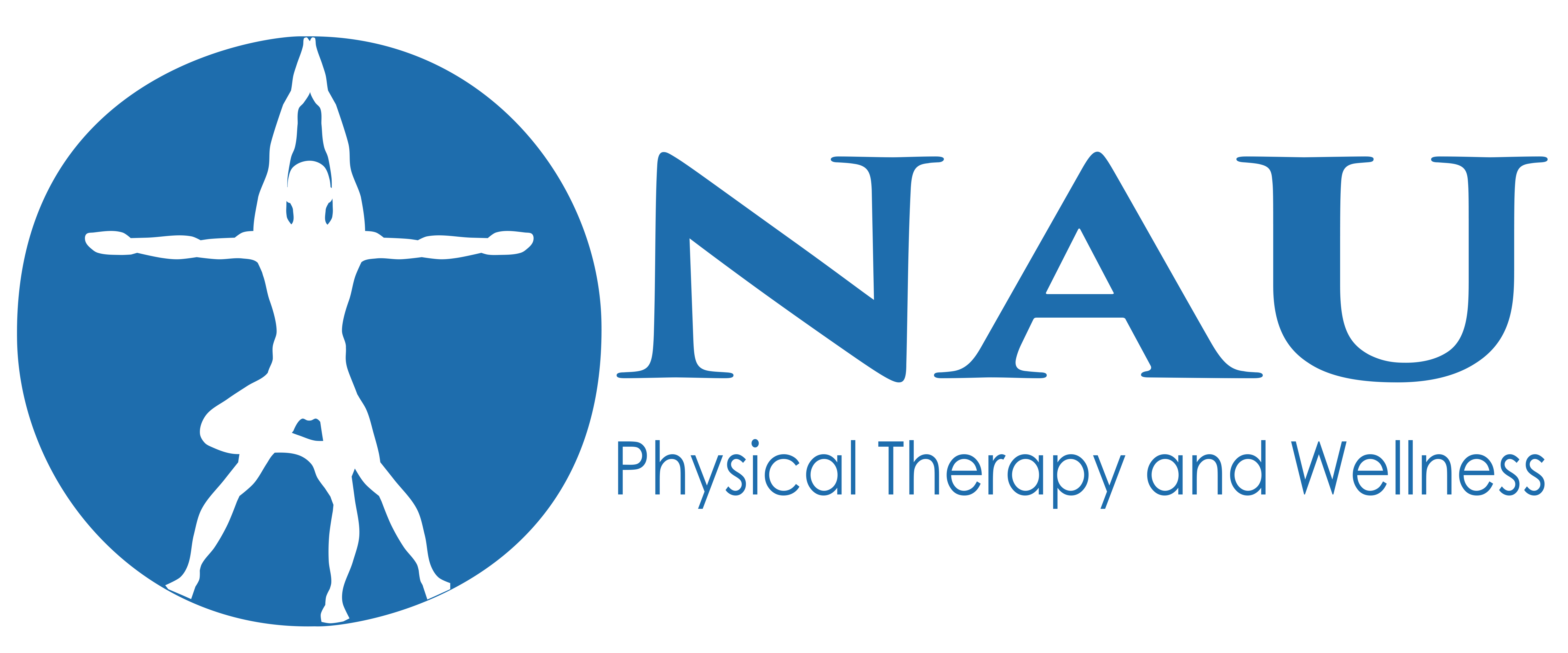By Sukie Nau, DPT/Owner, NAU Physical Therapy & Wellness
If you have kept a promise to yourself to exercise to stay healthy and in shape, and then have been met with debilitating sciatic pain, Nau Physical Therapy and Wellness has some information for you!
Top questions about sciatica:
Q: How long is this going to take to go away?
A: It depends on YOU.
In general, it takes to 4-8 weeks to go through the first 2 phases of healing to get to a point of no pain, where you recover all normal movement and strength.
It may take another 1-4 months to get back to all activities you want to do, depending on how active you are. This is the third phase of healing.
Here are 10 variables that determine how fast someone can heal:
1. Overall health: Healthy people heal faster. Younger people heal faster.
2. Other health issues, such as diabetes, heart disease, high blood pressure, tobacco use, alcohol abuse, and body weight influence healing rates and affect healing time (i.e., it takes longer).
3. Diet: People who consume more nutrients in their calories heal faster than those who primarily eat processed foods.
4. Rest levels: Our bodies need sleep and rest to rebuild. Lack of sleep slows healing time.
5. Stress levels: People who have high levels of stress heal more slowly.
6. Sedentary lifestyle: People who sit all day for work or to watch TV heal more slowly.
7. People who follow advice and instruction from top level healthcare professionals heal more quickly than those who do not follow through with care.
8. People who are highly aware of their daily postures and habits heal more quickly because they can adjust habits such as sleep or sitting positions more quickly.
9. Readers heal more quickly. People with higher attention spans are more likely to be self-educated on a topic and more likely to follow through with successful treatment.
10. People who think there’s hope tend to be more persistent and won’t let anything stop them. (Recently we had a man with sciatica fly from Colorado to Pennsylvania to be successfully treated for sciatica).
Q: How long before I see improvements?
A: Most people we see in the clinic feel better in 2-3 visits, or within 1-2 weeks. If you go longer than 2 weeks without feeling better or moving better, the cause of your sciatica may not be correct, regardless of what your X-ray or MRI shows.
Q: Can I become completely healed, or will this come back again?
A: Most people we see who complete the 3 Phases of Healing – meaning they no longer have pain, have restored motion and strength, and are back to all their regular activities without pain – have a minimal chance of having the pain return. The stronger the person is, the less likely they are to re-experience sciatica symptoms.
Your body is a bit like a car. If you take care of it, regularly change the oil, and keep it running and fine-tuned, the less chance of break down.
If you ignore it, it’s very likely to break down and need repair.
Q: Should I use heat or ice on my leg?
A: The cause of most sciatica (pain, numbness, or tingling in the leg) is in the lower back. Ice or heat on the leg will not change that.
Consider that sciatica is inflammation.
So, if you’re inflamed, do you want to put heat on it and make it more inflamed, or ice to calm the inflammation down?
We have seen some people use ice on the lower back to calm down the inflammation temporarily.
Q: Which exercises should I do?
A: The best exercises for you depend on the cause of your sciatica.
We cover the most common causes: Herniated discs, stenosis, arthritis, and pelvic or SI (sacroiliac) joint problem
Each has a series of gradually more advanced exercises, so the key to picking the right exercise is to find the cause of your sciatica.
Q: How often and for how long should I do the exercises?
A: Most people we work with in the clinic for sciatica do the exercises at least once per day, every day.
Some will do them up to 3 times per day. Doing the same exact exercises for years without changing could be a mistake.
In general, to get stronger, your exercise should progress and get more difficult. With training your body adapts.
Keeping that in mind, there are 2 rules to training:
· Everything works.
· Nothing works forever.
This means that any exercise (although painful) may make you stronger. But once your body adapts, it’s time to move on to something different or more challenging.
One of the best programs you can move on to once you complete the 3 Phases of Healing for your sciatica is a consistent walking program.
People who walk every day have less risk of reinjuring their back and sciatica.
Q: What do I need to do for complete care? Am I going to relapse?
A: The best thing to do for sciatica, if you are worried about it coming back again in the future, is to complete all 3 Phases of Healing:
· Phase One focuses on getting rid of the pain, numbness, and tingling.
· Phase Two focuses on getting normal movement and full strength back.
· Phase Three focuses on getting you back to your regular activities.
At NAU Physical Therapy & Wellness, when we see a patient who had sciatica and is now pain free and restored full motion and full strength, we ask:
“What activities have you avoided in the past month that you want to get back to doing?”
Some will say walking, or golfing, or gardening, etc.
We recommend they do everything they could do before for the next month or two.
As they keep doing their exercises at home to get stronger, most come back for a re-check appointment in 2 months and have no trouble at all.
Some have a relapse. In those cases, we focus on the activity and the program to help them get on the right track.
Remember, people who are stronger recover more quickly. So, it’s usually only one or two visits before that person is on the right track again.
Q: How do I know the cause of my pain?
A: There are 3 common causes of pain. Below are some general guidelines for each:
1) People with sciatica from a herniated disc:
· Are usually 35 years of age or younger.
· Usually have pain bending forward, twisting, coughing, or sneezing.
· The sciatica pain they experience is usually sharp and runs specifically down the back of the leg, possibly into the foot.
2) People with sciatica because of stenosis or arthritis:
· Are usually 50 years of age or older.
· Have pain when standing or walking.
· Feel relief with sitting.
3)People suffering with sciatica from SI joint or pelvic problems:
· Usually have pain when sitting for long periods.
· The sciatica they experience is usually on the outside of the thigh.
· Symptoms may include heaviness of one leg or feeling twisted.
Q: Which position should I sleep in?
A: On your back is best. Next best is on your side. Last is on your stomach. Regardless, an important key is to keep your spine neutral. This means that it is not twisted to the right or left but keeps the natural curve it normally has. Pillows or folded towels can be placed under your knees, under your side, or under your feet to help you sleep in the least painful position for you.
For more information, or to schedule a free consultation, call our office today.










